Chances are you’ve seen a movie or crime drama where the famous Rorschach inkblot test has been used to determine a character’s mindset. The test is so famous that a character named Rorschach, who wears an inkblot mask, is part of the Watchmen graphic novel series.
The Rorschach Inkblot Test Character Template in Plottr helps you get inside your characters’ heads like a forensic psychologist. Read on to learn how to use this tool.
What is the Rorschach Inkblot Test?
Created in 1921 by Swiss psychologist Hermann Rorschach, this projective psychological test famously examines test subjects’ responses to ambiguous inkblots.
The test is used to identify personality traits and emotional functioning. It’s based on the idea that we attribute meaning to shapes and objects, looking for familiar signs and symbols. A person’s interpretation of an inkblot thus suggests their state of mind and field of reference.
The famous inkblots look something like these, courtesy of rorschach.org:

There are many similar inkblot cards out there, with innumerable possible interpretations.
Interestingly, Rorschach never intended for his inkblot test to be used as a general personality test. Rather, it was to be used to aid in the diagnosis of schizophrenia. Nevertheless, it has been widely used for that purpose too in the more than 100 years since its development.
How Will the Rorschach Inkblot Test Help You Create Characters?
If you’d like to try a totally new way of developing your characters, the Rorschach inkblot test is a fun, thought-provoking tool for discovery.
Here are several reasons why the Rorschach inkblot test is useful for characterization work:
- Visual cues help you explore characters’ gut reactions. While lots of character templates depend on questions, visual prompts help you think what a character’s gut reaction to a sign or symbol would be. This helps you understand your characters’ psychology
- You’ll learn how your characters react. Imagine that your characters are taking the Rorschach inkblot test and watch their reactions. Would they share what they see truthfully, or maybe hide a gut reaction that would be too exposing?
- The use of imagination will make your characters more lifelike. Knowing a character’s physical characteristics, goals, motivations, and backstory is great. However, knowing their mind — and how it shapes their actions — makes them seem more like a real person
- You can go meta! You could even use Plottr’s Rorschach Inkblot Test Character Template to help you write a scene in which your character is given a similar test
- It’ll help you develop characters’ goals, motivation, and conflict. If a character sees violence in the inkblots, that could point toward an aggressive or dangerous past or present. Implying hidden or unconscious desires is next-level character building
- Using the Rorschach inkblot test for inspiration will help you choose symbols and allusions to scatter throughout your story, and thus could help you create some foreshadowing, too
Introducing Plottr’s Rorschach Inkblot Test Character Template
The Rorschach Inkblot Test Character Template in Plottr consists of 10 “What does this image mean to them?” questions with links to the relevant inkblot images.
Each question and link combination is listed under the headers Blot Card 1, Blot Card 2, and so on, through Blot Card 10.
For instance, within Plottr, the template looks like this:
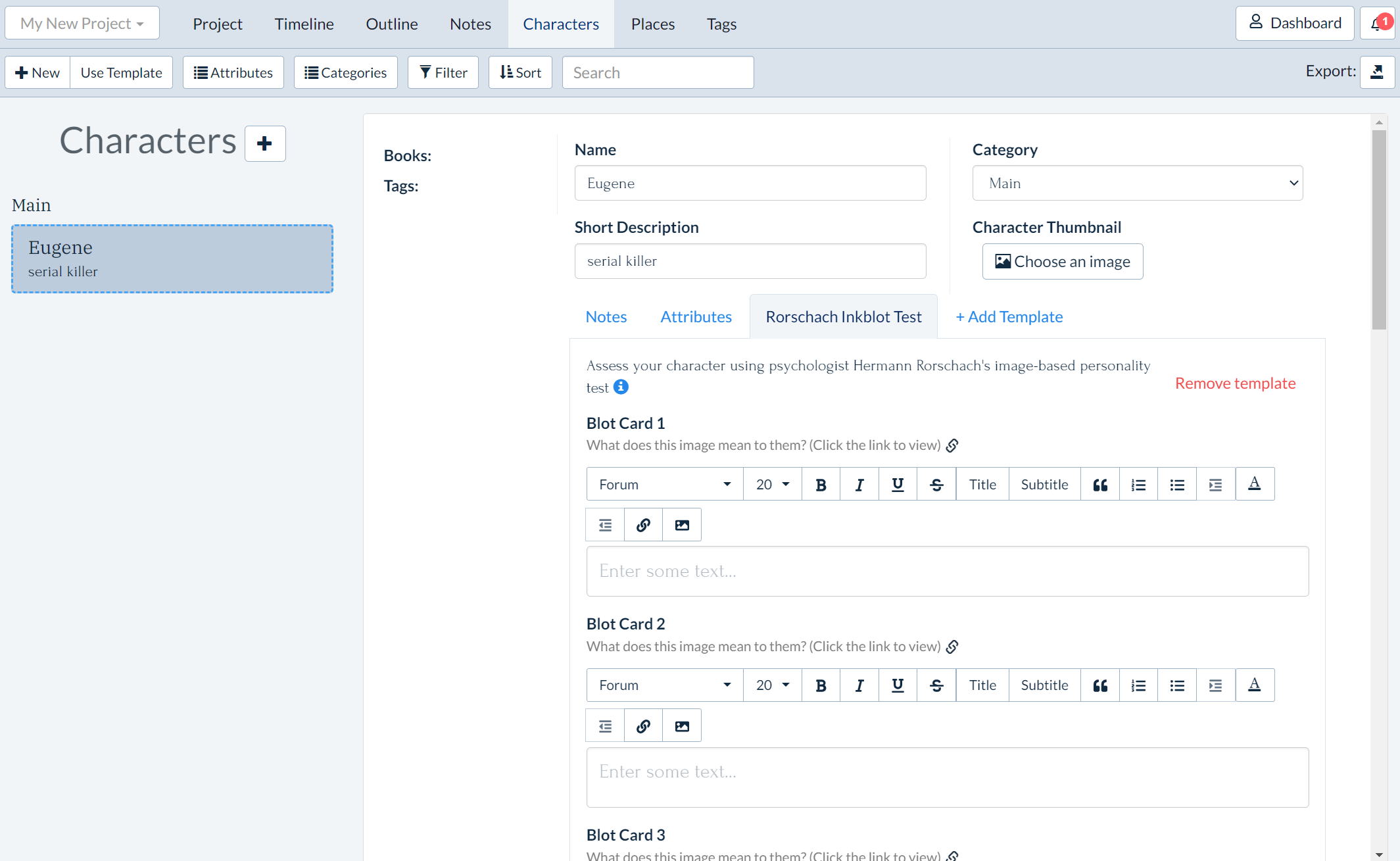
When you click the link icon under the title Blot Card 1, it brings up this image:
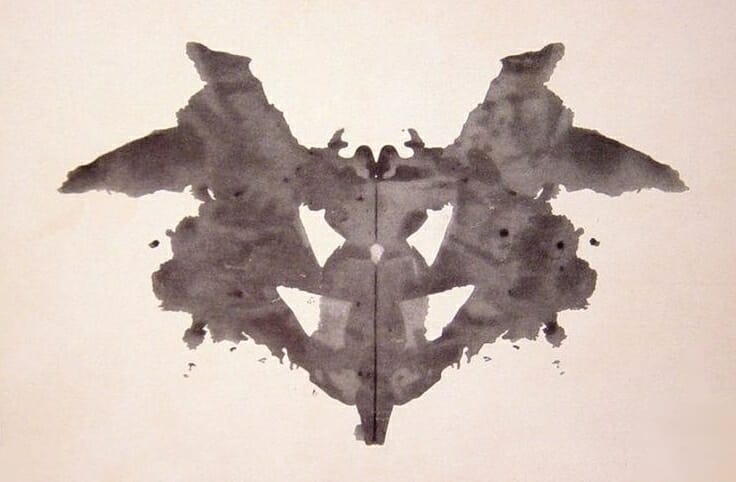
You should consider each image in turn and record your character’s reaction to it within the card’s response field.
After Blot Card 10, there is a final field called Interpretation. It poses one question: “What do the character’s responses as a whole indicate about who they are and how they think and behave?”
This is where you get into the meat of what the Rorschach test results really say about your character.
Example of Plottr’s Rorschach Inkblot Test Character Template
Now that you’ve seen what is available within the Rorschach Inkblot Test Character Template, let’s apply it to a sample character. Let’s call him “Eugene” and say he is a villain, a prolific serial killer.
Blot Card 1

Eugene immediately says “Angel” when asked what Blot Card 1 means to him (prefacing the word silently to himself with “avenging” as he wants to hide his violent and vindictive tendencies).
Blot Card 2
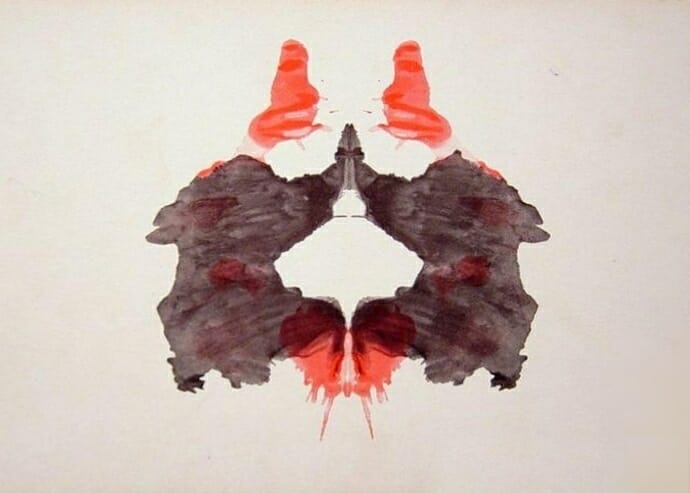
“Two dead bodies” is what Eugene thinks, before saying “Touching hands” aloud. Did the addition of red make him think of blood? Or does he see the bodies of victims?
Blot Card 3
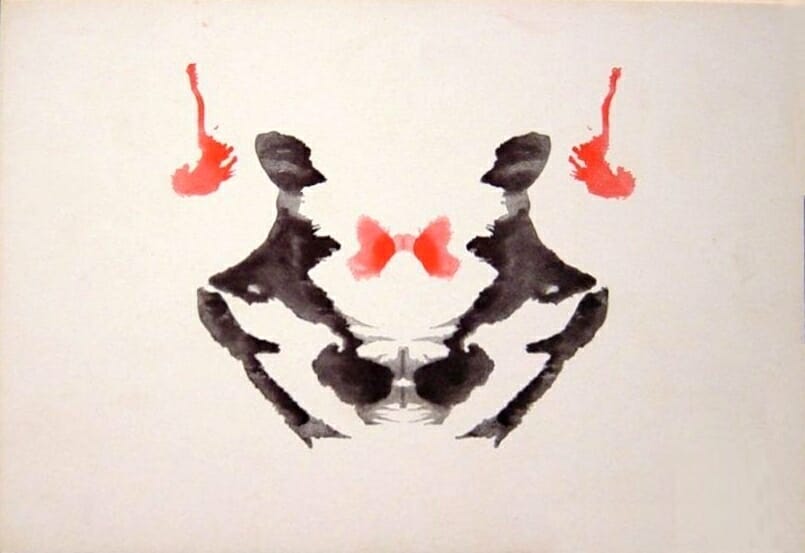
“Two people moving a bag.” What kind of bag? A body bag? A trash bag? Why does he say this?
Blot Card 4
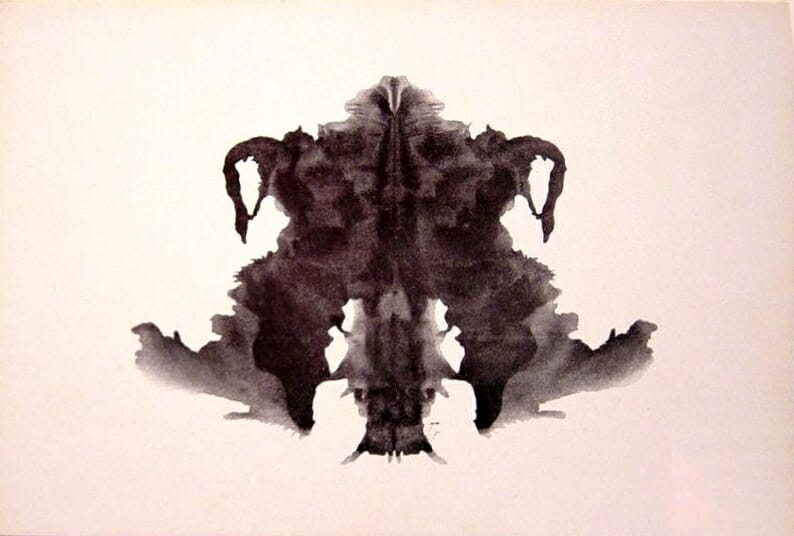
Eugene’s answer: “Myself looking down toward my large feet.” Does he say this because that’s when he feels most powerful, when he’s looking down at someone beneath him?
Blot Card 5
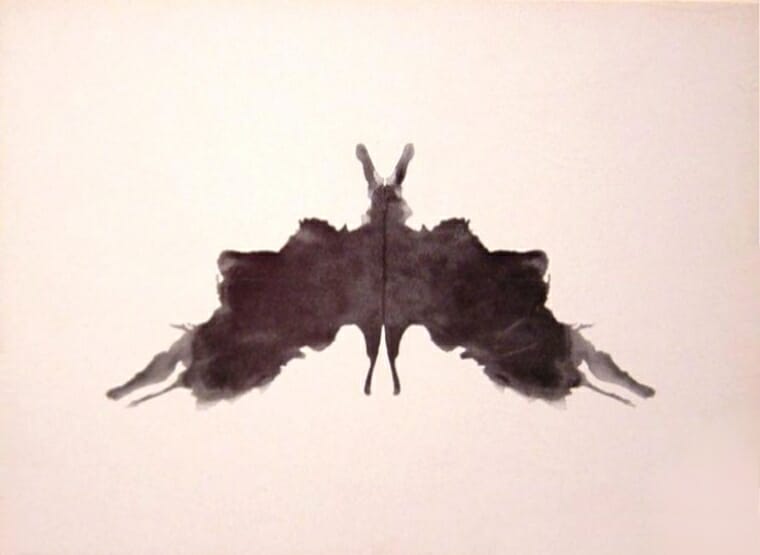
This is the second time Eugene says “Angel”, when most people would more likely see a moth or a butterfly. What is the significance of this repetition?
Blot Card 6
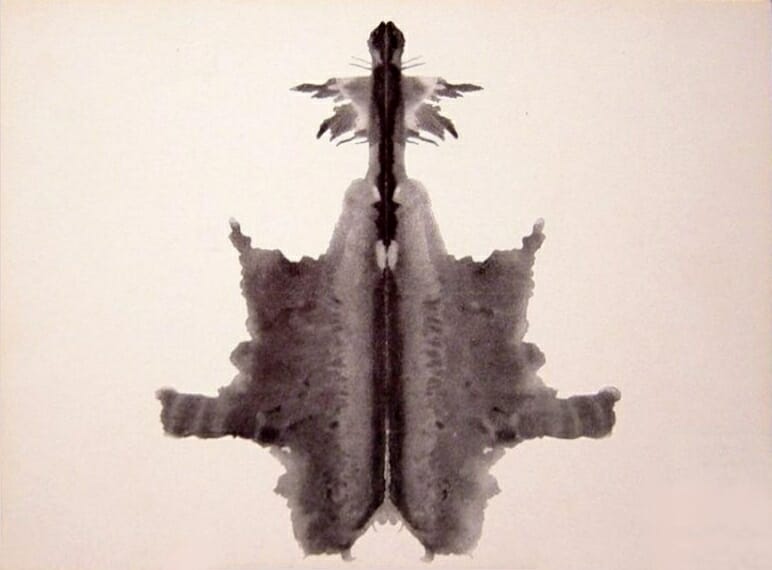
When Eugene says this image reminds him of a “spaceship fighter,” it might seem out of character considering his answers so far. But perhaps he’s a sci-fi fan in addition to being a serial killer. Or maybe he wants to throw a criminal psychologist off by changing tack.
Blot Card 7
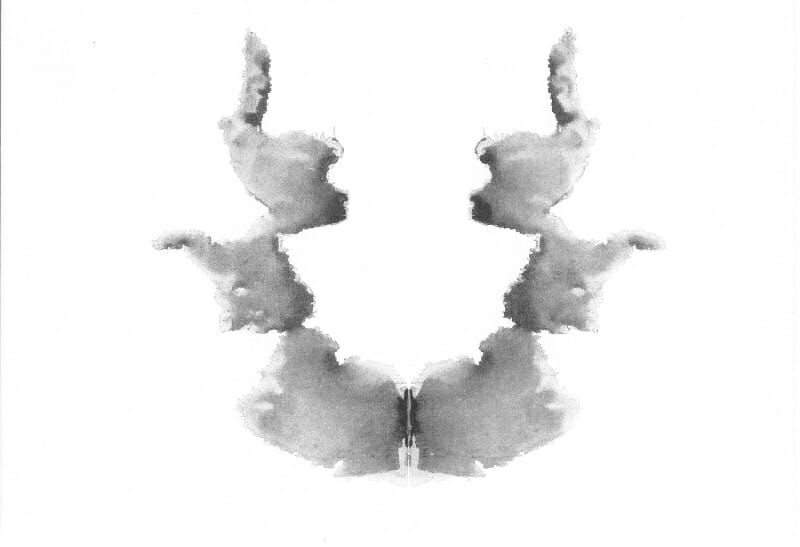
Eugene answers that this image is “bones”. Is that something he sees often in real life when disposing of his victims?
Blot Card 8
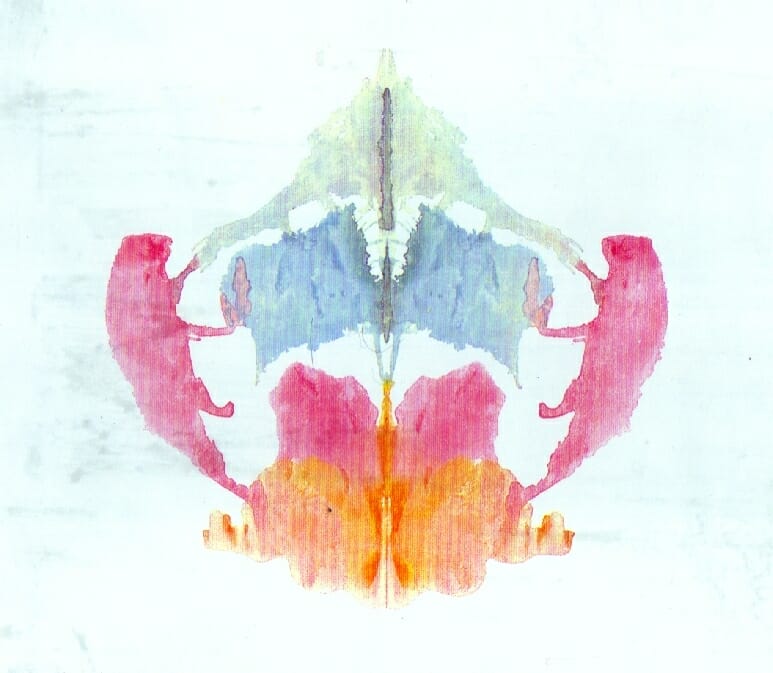
Eugene might say, “Bears climbing a mountain.” Is he a lover of the outdoors? Or is there some coded clue to his answer? Is he just riddling his interviewer?
Blot Card 9
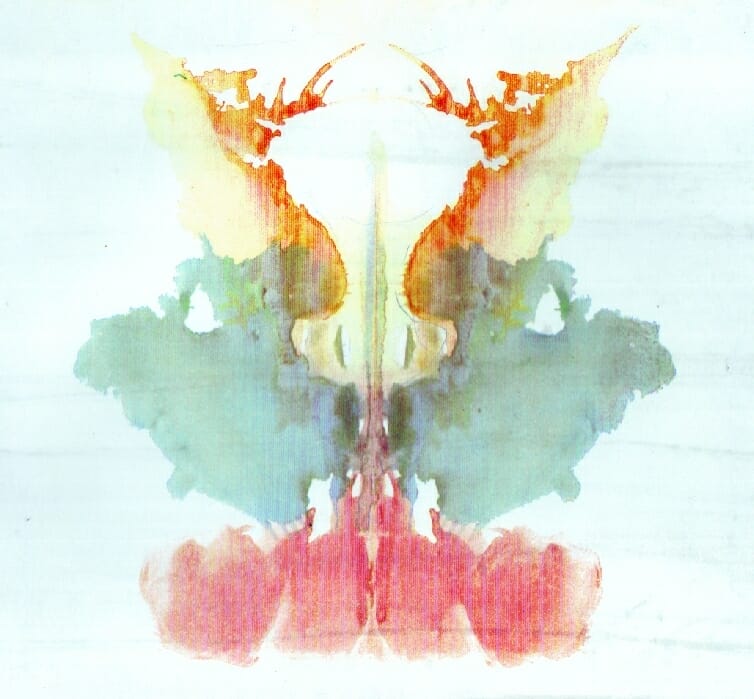
“Dragons.” Again, we have reference to a powerful beast.
Blot Card 10
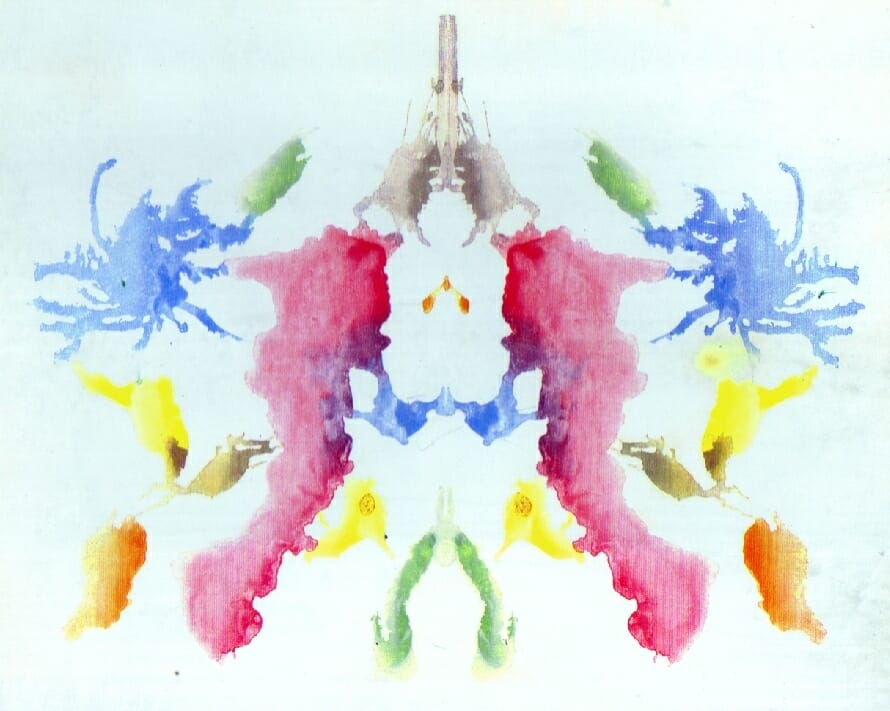
If Eugene answers that he sees “crabs and fish” here, it could be totally unrelated to his murderous tendencies. Or it could be a clue about where he dumps his victims’ remains somewhere along the coast.
Using Rorschach Inkblot Interpretation for Fictional Characters
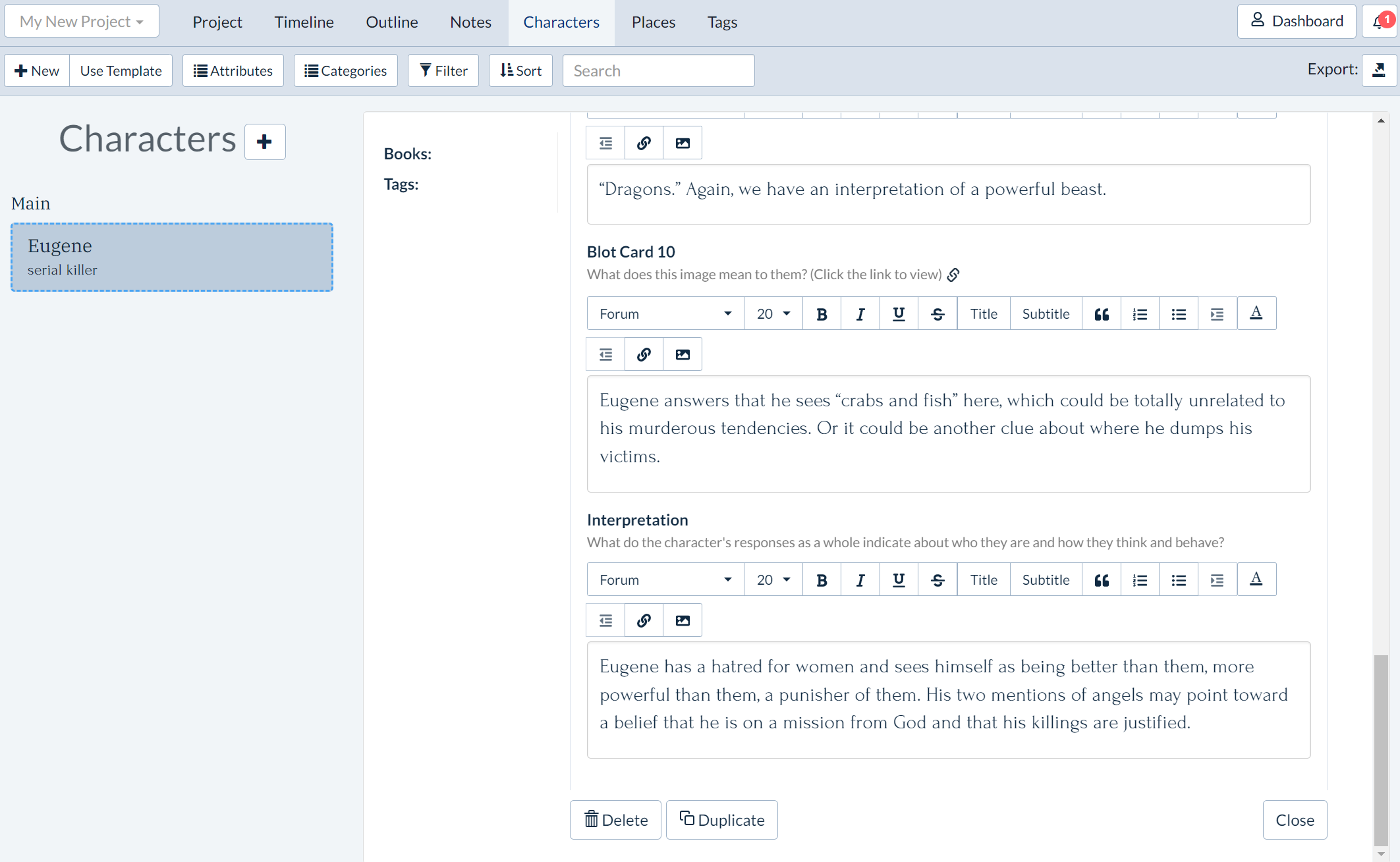
Eugene’s two mentions of angels may point toward a cognitive distortion that he is on a mission from God and that his killings are justified.
Because Eugene doesn’t always share his first, instinctive response, that could mean he’s shrewd at covering his tracks and hiding his darker thoughts and desires.
How to Use Plottr’s Rorschach Inkblot Test Character Template
If you’re ready to get started using the Rorschach Inkblot Test Character Template in Plottr, you will need to first purchase Plottr or sign up for a free trial.
When you have Plottr set up on your computer and are ready to start utilizing the Rorschach Inkblot Test Character Template, follow these easy steps.
- Step 1: Open Plottr and either start a new project or open an existing one
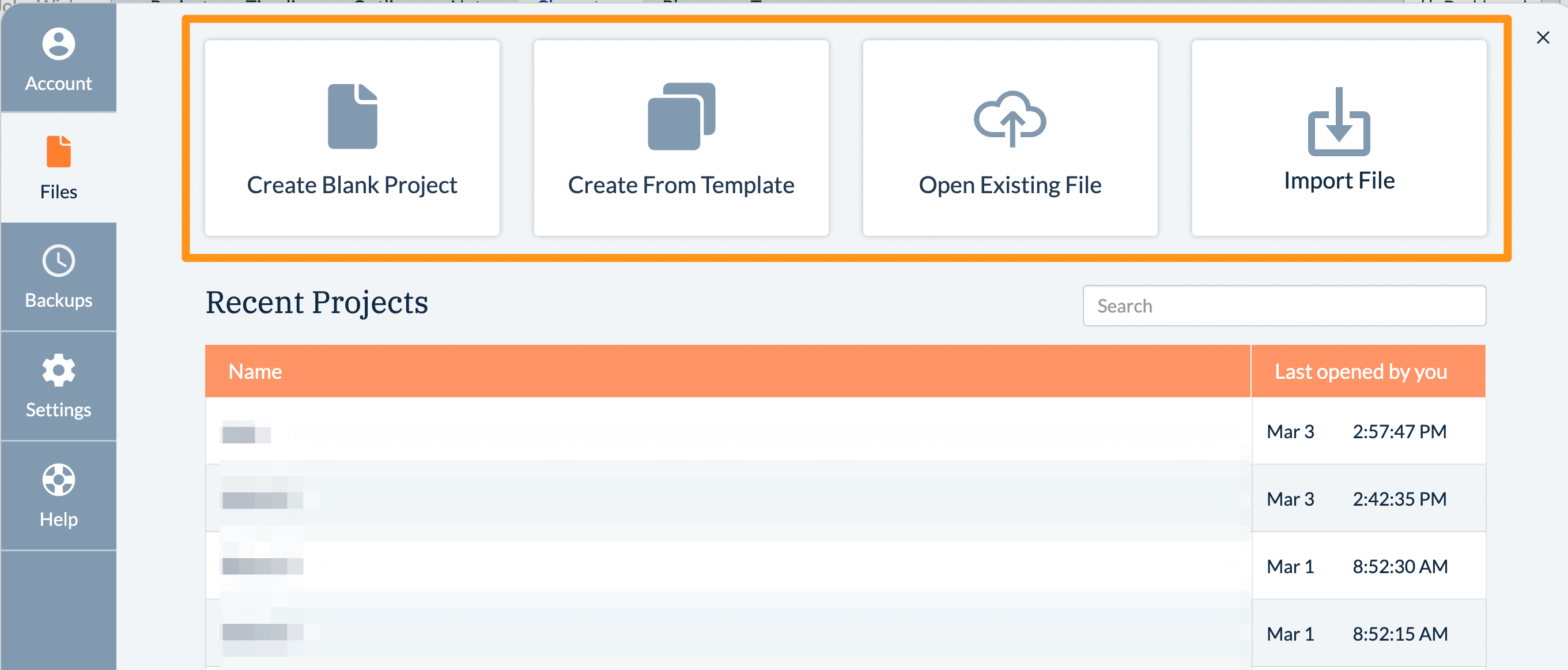
- Step 2: Once the project is open, navigate to the Characters tab and create a new character (or edit an existing one) by hitting the + button on the left of your screen. After this, New Character will show under Uncategorized until you begin filling in details
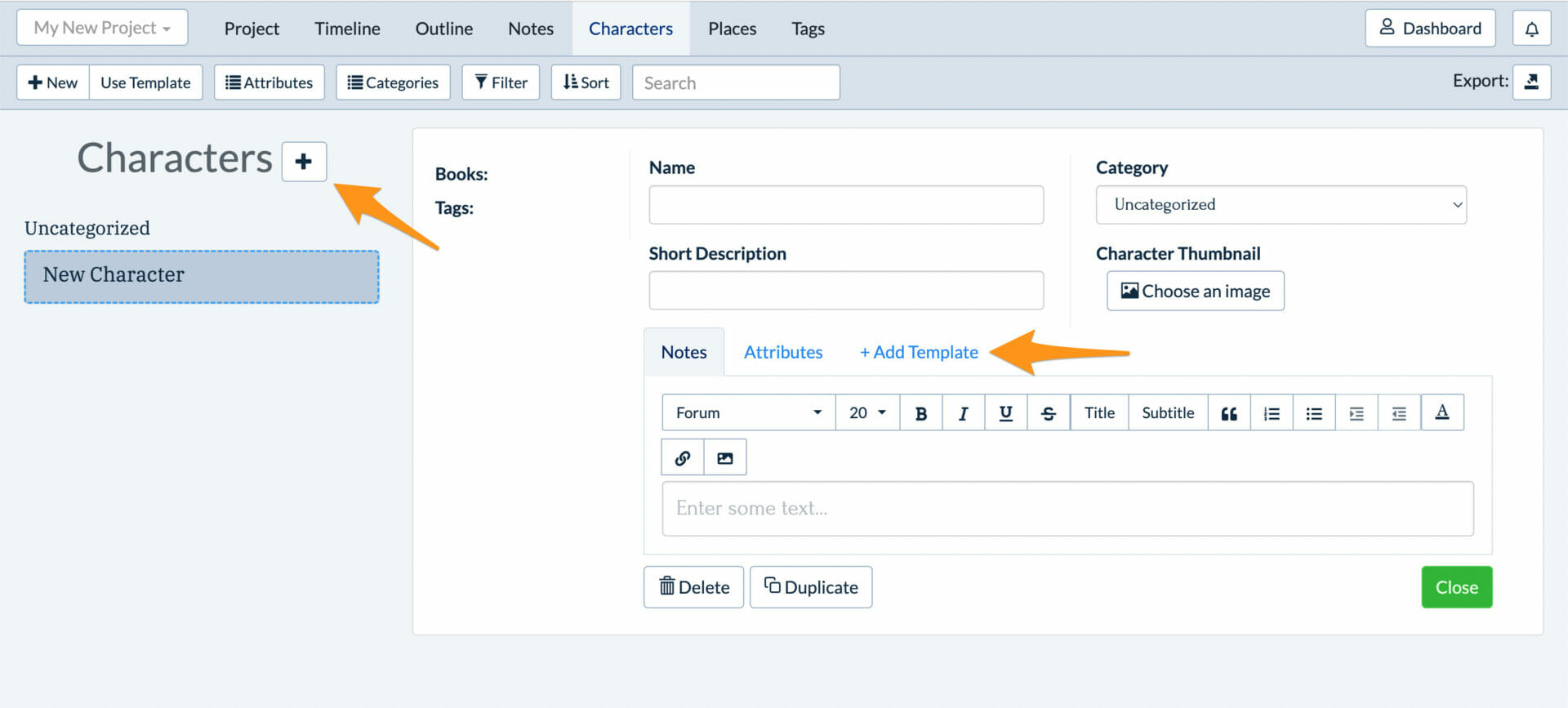
- Step 3: Click +Add Template and select Rorschach Inkblot Test from the template menu

Step 4: Click the green Choose button. This will apply the template to the character you’re working on, and you can start filling in the details for each card
If you want to add more templates to help further develop your characters from here, feel free to do so! The psychological insights of the inkblot test go well with these templates:
Picture This: Better, Deeper Characters
Armed with Plottr’s useful story planning tools and the Rorschach Inkblot Test Character Template, you’ll be able to examine the inner workings of your characters. Start now with a free trial.
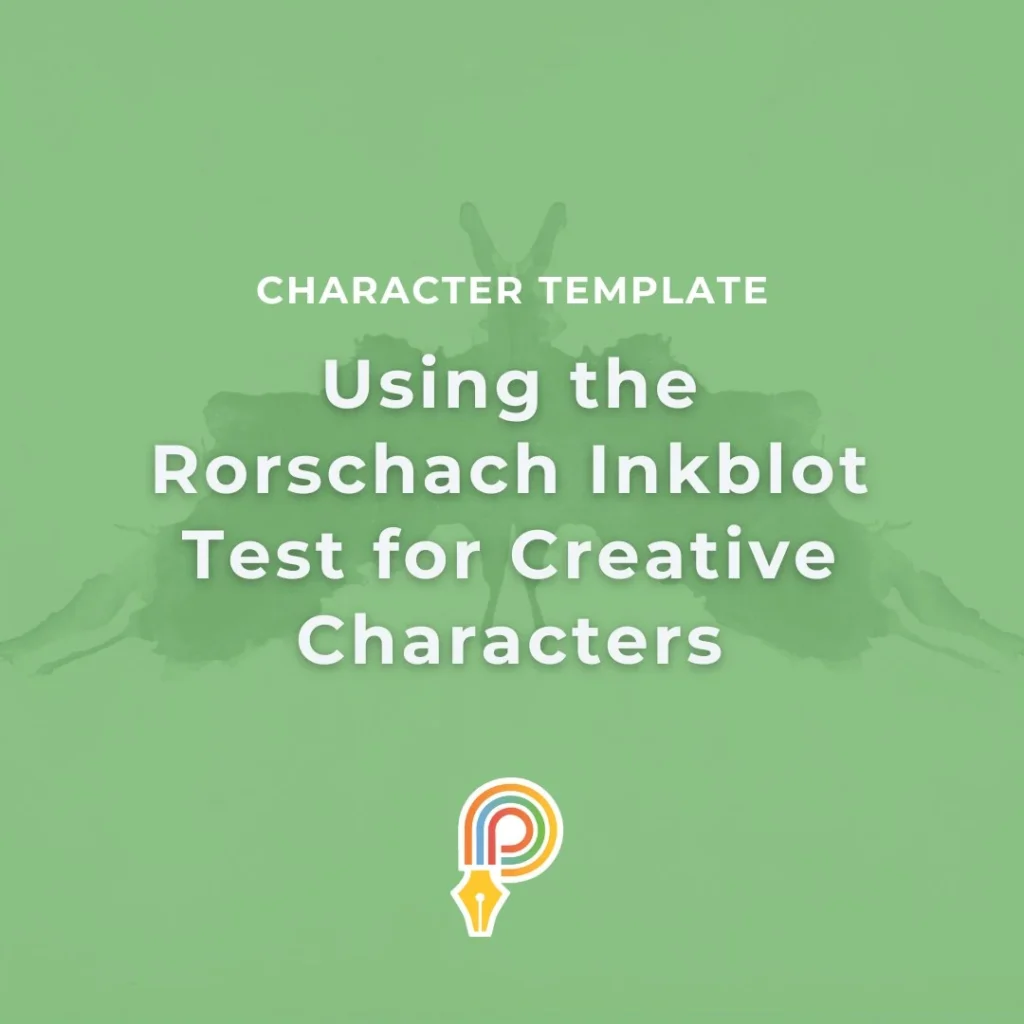

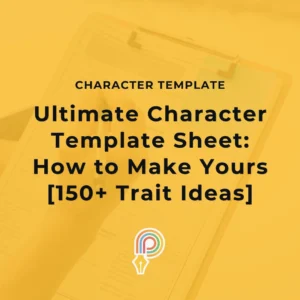
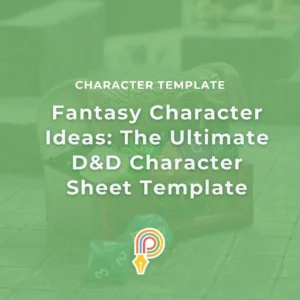

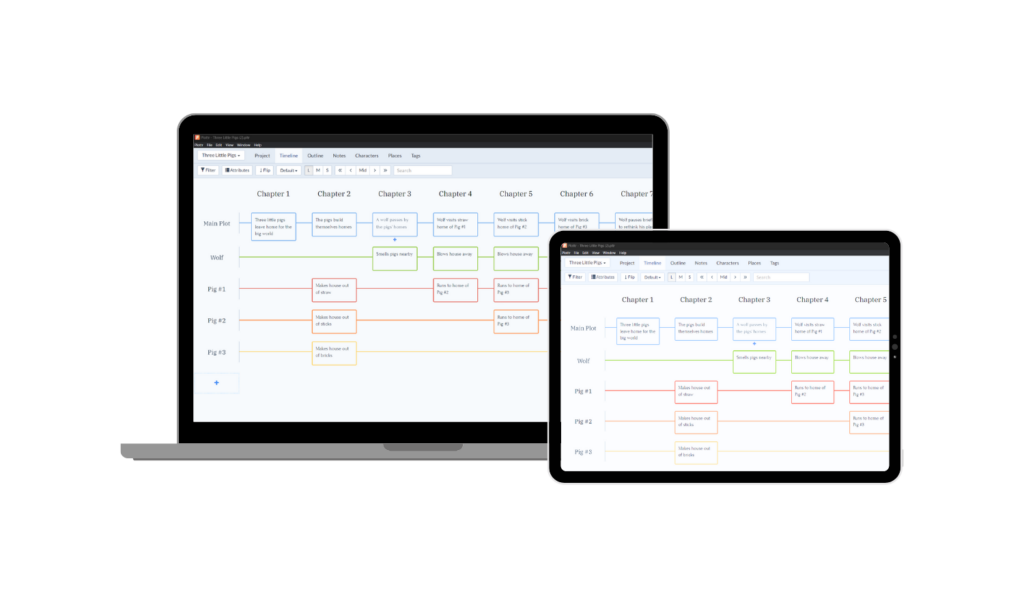
2 thoughts on “Using the Rorschach Inkblot Test for Creative Characters”
Great write-up! Learned something new today.
The Rorschach Test is inspirational and this reading has given me a clearer understanding of it, and I just want to say thank you. MGP